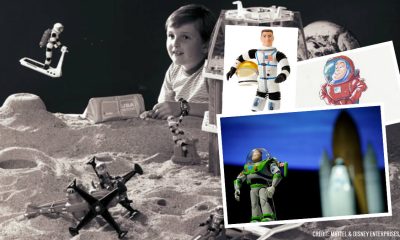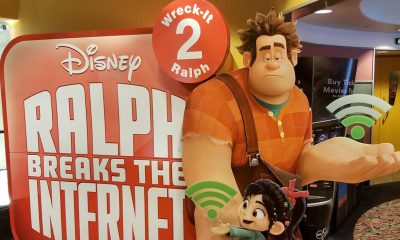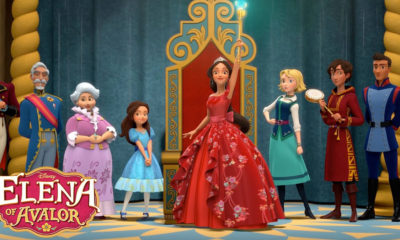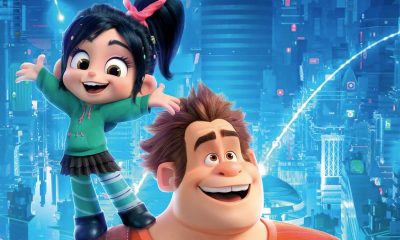Film & Movies
Getting Just the Right Voices for Hunchback’s Gargoyles Proved to be a Pretty Gruesome Go
Yep. We’re raiding the JHM archives again. This time around, it’s a story from April 2000 that details all the trouble Disney Feature Animation had when it was casting Victor, Hugo, and Laverne … or should I say Chaney, Laughton, and Quinn?
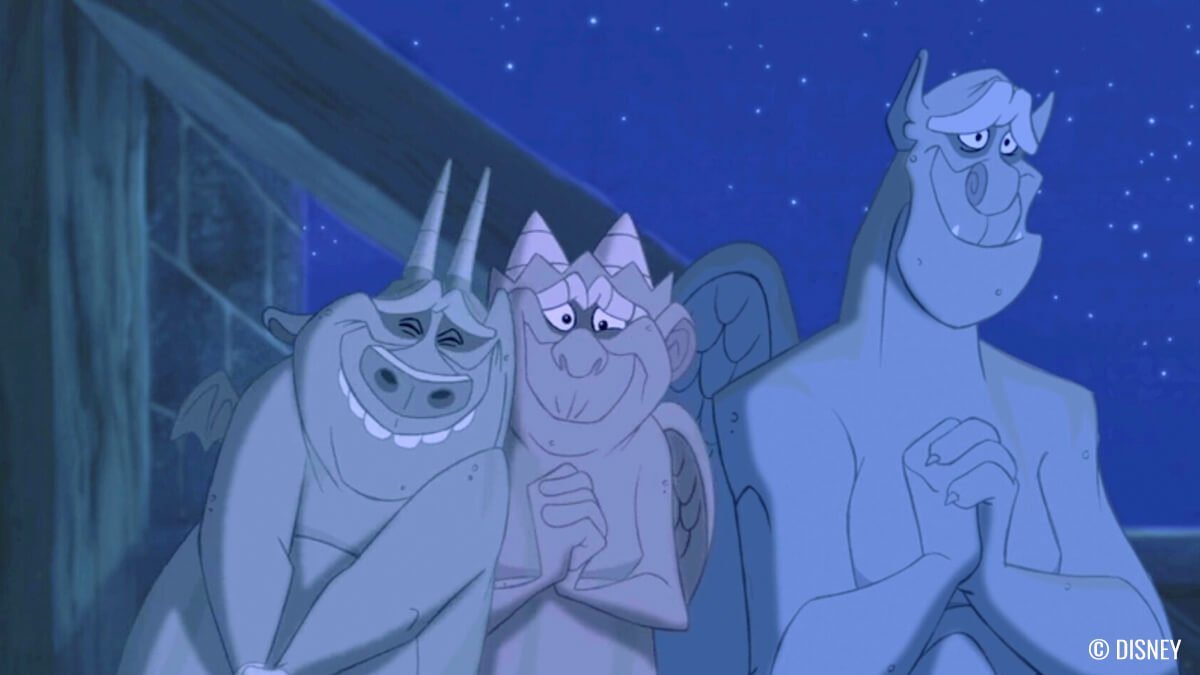
How tough can it be to do the voicework for the comic relief in a Disney animated film?
I mean, what do you do? You show up at the studio, schmooze with the director, say a few jokes, take an hour for lunch, do a few more jokes, break for tea, do another couple of jokes, then — ooops — it’s time to go home. The hardest part of the job would seem to be that long walk out to the mailbox, where you have to pick up that oversized check.
At least that’s what people seem to think happens when actors are hired to do voices for Disney films.
The reality of the job is considerably different — particularly when you’re working on a film that’s in trouble.
Cyndi Lauper – Voice of Gargoyle Quinn
Think of poor Cyndi Lauper.
All her life, this colorful pop star had wanted to be in an animated film for Disney. Whenever she went to one of the studio’s film openings or attended a Disneyland press event with her family, Lauper would badger company executives, repeatedly telling them “I want to do a cartoon with you guys.” The executives all assured Cyndi that they knew about her interest. They promised Lauper that — once the right project came along — she would be the first person that the Mouse would call.
Cyndi pestered the Mouse for years until in late 1993, that phone call she’d been waiting for finally came. Disney was just beginning development of a musical cartoon version of Victor Hugo’s “The Hunchback of Notre Dame.” The folks over at Feature Animation were wondering whether Lauper would be interesting in being a part of the project.
Would she?
Lauper practically flew over to Burbank, so eager was she to find out what the Mouse had in store for her.
On the drive over, Cyndi wondered: “They couldn’t be thinking of me for the voice of Esmerelda … could they?”
Ah … actually, no. Disney wanted Lauper to audition to be the voice of one of Quasimodo’s made-of-stone friends: Quinn, a gargoyle.

Cyndi was somewhat taken aback by this request. I mean, she knew that her voice and her looks were … somewhat unconventional. But to be considered the perfect person to portray an ugly stone statue didn’t seem like much of a compliment to Lauper.
But Cyndi — who still dreamed of achieved screen immortality as a character in a Disney animated film — shrugged off the perceived insult and threw herself into the audition process. She did a reading with Disney’s casting department, then met with the film’s directors, Kirk Wise and Gary Trousdale. They liked the energy and humor Lauper brought to the part.
A week later, Cyndi was hired.
Finding Sidekicks – Why “The Hunchback of Notre Dame” Added Gargoyles
Now keep in mind that Ms. Lauper was brought on board fairly early during “Hunchaback”‘s production. Tom Hulce, Demi Moore and Kevin Kline hadn’t even been hired at this point. At the time, Wise and Trousdale still weren’t quite sure how they were doing with the film. Given how serious the original Victor Hugo novel was, they knew that a new film version would need considerable comic relief — particularly if they wanted to make the project palatable to modern audiences. But what sort of jokes should they do to lighten this somber story? And where?
Wise and Trousdale felt that one of the keys to making “Hunchback” work as animation was to give Quasimodo some silly sidekicks.
These characters would have to serve two purposes:
1) Give the Hunchback someone to talk with and confide in while he was locked away in his bell tower, and — more importantly —
2) Make Quasimodo seem more lovable.
A person with loyal, funny sidekicks has got to be lovable, right?
Hoping to find the right ingredients, the “Hunchback” development team spent a few months tossing around sidekick ideas for the hunchback.
Birds and Disney Princess Films
One concept was to have Quasi befriended all of the birds that lived up in the rafters of the cathedral with him. Just like in Cinderella, his little feathered friends would have helped the hunchback through his day — doing little chores for him, cheering him up, cheering him on. You get the idea.
But — because this same bird friend idea had already been so thoroughly played out in Disney’s 1950 animated feature, “Cinderella” — Wise and Trousdale opted not to go forward with this story idea (though you can still see a hint of this character development in Quasi’s interaction with the fledgling pigeon at the beginning of the film).
Bells and Talking Objects
Then the directors toyed with the idea of having Quasi actually be friends with the bells in the tower; this was something that Hugo himself had touched on in the original novel. He had the hunchback name many of the bells in the belfry — little Sophia, Jean Marie, Anne Marie, Louise Marie and Big Marie — as well as converse with the bells. So it didn’t seem like too much of a leap for the filmmakers to have the bells talking back to Quasi.
But — again — Wise and Trousdale weren’t all that anxious to repeat something that had already been in done in a Disney film. As the directors of “Beauty and the Beast,” these guys had already made a candelabra, a mantleclock, and a teapot talk. So turning a 10 ton bell into Quasi’s close intimate friend didn’t seem like that much of a challenge to them.
Gargoyles
So that left the gargoyles — those strange stone statues that lined the parapets of Notre Dame. Wise and Trousdale liked the idea of giving Quasi some misfit gargoyles — statues so ugly that the stonemason didn’t dare put them out on display — to hang out with. The directors and their “Hunchback” development team knocked around a few ideas and came away with some unique names and personalities for these proposed gargoyle characters. They were:
Chaney
The big fat stupid one. Think of Pumbaa, only carved in stone.
Laughton
The haughty, stiff, proper one. A Felix Ungar frieze.
Quinn
The young, kind-hearted nurturing one. (This was the character Disney had hired Lauper to do the voice for.)
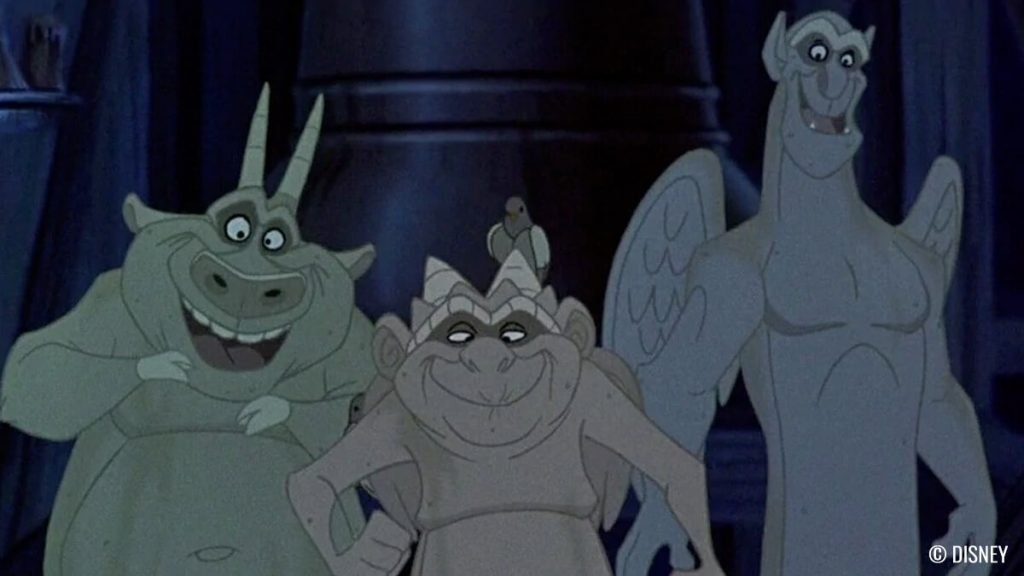
Tribute to the Original(s) “Hunchback”
Okay … I know. You’re probably already saying to yourself: “But Jim. Those aren’t the names I remember from Disney’s animated ‘Hunchback’ movie. Weren’t the gargoyles called Victor, Hugo and Laverne?”
Yes they were … eventually.
But — when Disney’s “Hunchback” project started out — Kirk and Trousdale wanted to call the movie’s gargoyle characters Chaney, Laughton, and Quinn.
Why?
Well, if things had worked out the way Kirk and Gary had intended, these character’s names would have made a great in-joke as well as paid tribute to three great actors who already had strong ties to this story.
How so? Well, Lon Chaney starred in the first version of “The Hunchback of Notre Dame,” a silent movie Universal Studio produced in 1923.
Charles Laughton appeared in the first sound version of “Hunchback,” a black and white film that RKO Studios produced in 1939.
Anthony Quinn made the first color film version of “Hunchback,” which Allied Artists released in 1957.
Chaney. Laughton. Quinn. Get it now?
Wise and Trousdale thought that — by using these names — they’d come up with a really clever way to pay tribute to these actors who had already done such a superb job portraying Victor Hugo’s tragic hero.
Unfortunately, Disney’s legal department thought otherwise.
Disney Legal and Naming the Gargoyles
The Mouse’s lawyers were worried that Chaney and Laughton’s heirs might be offended by this gesture and decide to sue the studio. They were particularly concerned about Anthony Quinn — who is very much alive and had a reputation for suing folks at the drop of a hat — coming after the company with an army of attorneys.
So Disney’s lawyers told the “Hunchback” development team that there was no way that they’d be allowed to name their gargoyle characters after any actors — living or dead. But Kirk and Trousdale were really reluctant to give up on this gag / tribute. So, for a short time, the “Hunchback” gargoyle characters were called Lon, Charles and Anthony. Surely Disney’s legal department wouldn’t have a problem if the development team named the characters by using only the first names of the actors who’d played Quasimodo?
They could. They did. Disney’s legal department said “No” again. Which left the production team with three gargoyles to name.
Victor, Hugo, and Laverne – “The Hunchback of Notre Dame” Gargoyle Sidekicks
The Victor and Hugo idea came very quickly. After all, the names paid tribute to the author of “The Hunchback of Notre Dame.” More to the point, he was a dead guy — so Hugo wasn’t around to try and sue Disney. The legal department LOVED this idea.
But what to call that third gargoyle? Wise and Trousdale pondered over this one for a while. As written, the character was a female as well as being a member of a trio. The name they came up with had to fit the character. More importantly, it had to be funny.
Finally, Kirk was the one who came up with the solution. He recalled the Andrew Sisters, a legendary musical trio from the 1940s — best known for their performance of the “Boogy Woogy Bugle Boy of Company B.”
And what were the sisters’ names? Patty, Maxine and Laverne. Laverne seemed like the funniest name of the three, so that’s how Cyndi Lauper’s character became known as Laverne.
Only now … it wasn’t so certain that Lauper’s character was going to stay Lauper’s character.
Troubles Voicing the Gargoyles – Laverne and Hugo
Cyndi was doing wonderful work in her recording sessions. Good, clear, sharp professional stuff. The problem was that the script — as originally written — wasn’t working. The way Lauper was portraying the character of Laverne sounded like a contemporary of Quasimodo. Someone his own age, who understood his need to get out of the bell tower and explore that great, big world “Out There.”
The trouble was that Cyndi’s youthful voice sounded too youthful. Instead of coming across as a friend who was offering Quasi wise counsel, this earlier version of Laverne sounded like some young kid urging Quasimodo to bust out of the belfry and go party. Take a walk on the wild side. Which was not how Wise and Trousdale wanted Laverne to sound, because — in the original version of the script — this was the sort of stuff Hugo was telling Quasi.
As you might have guessed, Wise and Trousdale were having script trouble with their short fat gargoyle too. They had hired veteran sitcom performer Sam McMurray — best known for his work on “The Tracey Ullman Show” — to voice Hugo. And Sam was doing a great job with Hugo as the character was written then: sort of a stone version of John Belushi’s Bluto character from the 1978 comedy, “Animal House.” A big gross funny guy.
But perhaps too gross. As test versions of Disney’s “Hunchback” were assembled — using images off of the pre-production storyboards as well as audio from those early recording sessions — it became obvious that the gargoyle trio just wasn’t jelling.
Charles Kimbrough’s work as Victor seemed right on the money. Kimbrough gave his gargoyle character the same prissy air he brought to his stuffy newscaster character, Jim Dial, on the CBS sitcom, “Murphy Brown.” This was exactly what Wise and Trousdale wanted. But there was something obviously wrong with Hugo and Laverne.
Fixing the Script
So the “Hunchback” development team reworked the script, then called Lauper and McMurray back to do some additional recording sessions. When the tapes from these sessions didn’t work out either, Kirk and Gary made another stab at fixing the script, then called Cyndi and Sam back in again to have another stab at the material.
When the tapes from these sessions fell flat as well, Wise and Trousdale had to face facts. The problem wasn’t the material. They’d just hired the wrong actors to perform their script.
Replacing Lauper & McMurray
It was now obvious that Lauper and McMurray needed to be replaced. While nobody likes to make phone calls like this, Gary and Kirk personally called Cyndi and Sam to let them know that they were off the project. Wise and Trousdale apologized profusely, explaining to Lauper and McMurray that they’d both done fine work. It was just that the characters of Laverne and Hugo — as originally written — weren’t working. Disney wanted to see if getting a fresh start on the characters, bringing in some new actors to portray these parts, might be able to get “Hunchback” back on track.
McMurray took this sad bit of news stoically, like the industry veteran that he is. But Lauper was heartbroken. She had pursued a part in a Disney animated film for nearly a decade. And Cyndi had been on board “Hunchback” almost from the project’s inception — long before Hulce, Moore, or Kline had been hired. Now she was out of the movie. Her dream job gone. Needless to say, Lauper took her dismissal very badly.
Wise and Trousdale felt awful about dashing Cyndi’s hopes for animation immortality. But they also had a film that was in production that was in serious trouble. Sometimes tough decisions have to be made. So they put the memory of Lauper’s tears behind them and tried to figure out how to fix Hugo and Laverne.
Based on the early test footage, it was fairly obvious that one of Wise and Trousdale’s biggest problems is that they’d just gone too far with Hugo. The fat obnoxious gargoyle was just coming across as too gross for audiences to warm up to. When recasting Hugo, Gary and Kirk needed to find someone who was gifted at playing annoying but amusing characters that still managed to hold audience’s sympathies. But who had talent enough to pull that amazing feat off?
Jason Alexander as Hugo
Luckily, they didn’t have to look much further than the “Must See TV” line-up Thursday nights on NBC. There was Jason Alexander — playing his heart out as the neurotic but still somewhat loveable George Costanzo on “Seinfeld.” Here clearly was the man who could pull off Hugo, having already walked that thin line between amusing and annoying for five seasons of television.
When Alexander got the call to come out to Burbank and audition, he was thrilled. Just like Cyndi, Jason had been trying for years to land a part in a Disney animated film. Previously, he had tried out for the roles of Lefou and Cogsworth in “Beauty and the Beast” as well as Timon and Pumbaa in “The Lion King.” But the closest that Alexander had come to making his toon dreams come true was landing the role of the comic villain, Abis Mal, in the 1994 direct-to-video sequel to “Aladdin,” “The Return of Jafar.”
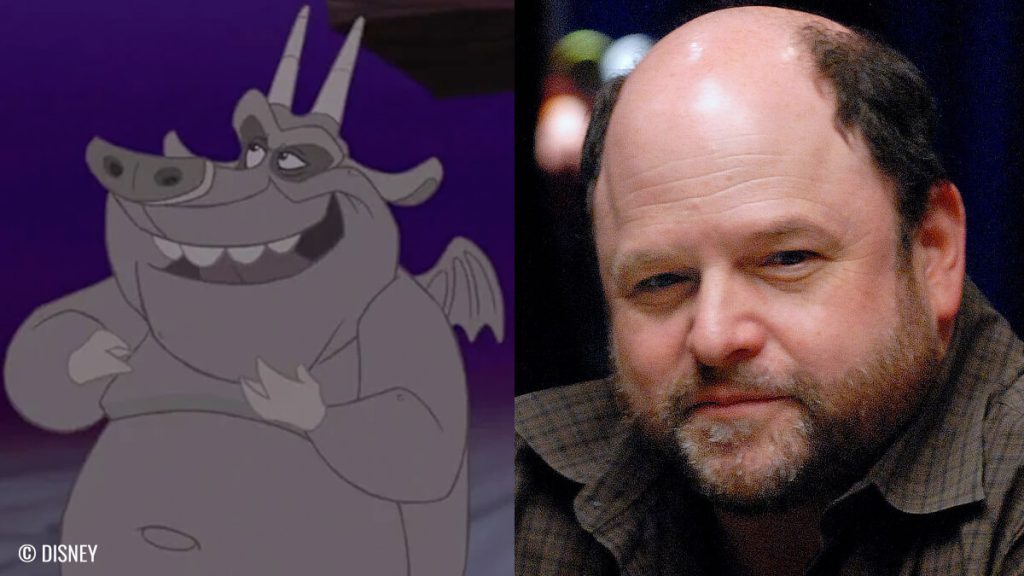
But here … finally … was his big break. So Jason zoomed over to Disney Feature Animation and wowed Wise and Trousdale with his audition. Alexander immediately got Hugo, figuring out — almost instinctively — how far he could take the character without making him too obnoxious. With Jason voicing this grubby little gargoyle, Hugo finally worked. Funny but feisty, Alexander’s gargoyle contrasted beautifully with Kimbrough’s tight, prissy portrayal of Victor. These two characters could now be counted on to produce huge laughs for the movie.
So now what do Gary and Kirk do with Laverne?
Finding the Voice for Laverne
It should be noted here that — at this point in the production — Wise and Trousdale were under tremendous pressure to cut the third gargoyle out of the picture. Given how well Victor and Hugo were now working, Laverne suddenly seemed unnecessary. A third wheel, if you will. Dropping that character would have saved the film a lot of money, as well as freeing up a lot more screen time for the two other gargoyles to cavort.
But Gary and Kirk felt Laverne was crucial to the film.
Hugo kept urging Quasi to take a chance, go for the gusto.
Victor was the voice of prudence and caution.
Wise and Trousdale knew that their lead character needed someone in the middle, someone with the common touch who’d tell Quasi just to listen to his heart.
So “Hunchback” Head of Story Will Finn took a stab at rethinking Laverne. Working with Trousdale, they re-imagined the female gargoyle not so much as a nurturing contemporary of Quasi but as a wise if somewhat crazy old grandmother. “The sort of woman who had a million cats and sat out on her front porch, cradling a shotgun” was how Gary liked to describe her.
This new version of Laverne looked to be just what Wise and Trousdale were looking for. Still funny, but obviously different enough from Victor and Hugo. Plus this rethink of the character — playing her as more of a favorite old aunt of Quasi — allowed Laverne to deliver that common sense advice that the lonely young hunchback so desperately needed to hear.
Having finally fixed this troubled character, Gary and Kirk were saddled with an even bigger problem: Who do they find to portray this cranky but kind-hearted old gargoyle?
Mary Wickes as Laverne
It was just about this time that the sequel to Disney’s 1992 hit, “Sister Act” — “Sister Act 2: Back in the Habit” — was hitting theaters. And there in a supporting role as feisty old Sister Mary Lazarus was veteran character actress Mary Wickes.
If ever you could call someone an old show business trouper, it was Mary Wickes.

Her career started ‘way back in the 1940s, when Wickes played second banana to Abbott and Costello in their 1941 Universal Studios comedy, “Hold that Ghost.” For the next five decades, Wickes never stopped working. She did TV with Lucille Ball, sketch comedy with Bob Hope, movie musicals with Bing Crosby, Broadway, commercials. You name it. Mary Wickes did it.
As soon as Disney Feature Animation’s casting office pointed out Wickes to Wise and Trousdale, they knew that this might finally be the person who could pull off Laverne. Wickes’ reedy mid-western voice along with her crack comic timing might just be the combination Gary and Kirk were looking for to make their third gargoyle work.
Wickes came in for her audition in early 1993. While basically a novice at feature animation, having a little voice work for TV animation in the early 1990s, Mary still nailed the part. Wickes brought to Laverne everything Wise and Trousdale had hoped she would: the humor, the heart, as well as a real sense of wisdom.
As soon as they heard Wickes’ audition tape, Gary and Kirk offered her the part. Being the old show business hand that she was, Mary was happy to just to be working. In spite of being well over 80 years old at the time, Wickes never let her age slow her down. Mary was on time to every session and gave 100% every time she was behind the mike.
Gargoyles Complete – Adding Comic Relief
Now with Alexander and Wickes on board, the gargoyle scenes in “Hunchback” finally started firing on all four cylinders. Here was the humor and the heart that Wise and Trousdale had been looking for all those months. Finally these early crucial scenes in the film — where Quasi revealed his longing to leave the bell tower and journey “Out There” into the world — began to play properly.
In fact, the Victor, Hugo and Laverne sequences began working so well that — late in production, as “Hunchback” hit a trouble spot — Wise and Trousdale turned to the gargoyles to help bail them out.
Okay. Remember the film? The trouble spot comes up well into the third act of the film. Frollo is burning down Paris in his desperate search for Esmerelda. Phoebus has been shot in the back with an arrow for defying an order from the crazed cleric. Esmerelda ends up rescuing the wounded soldier from a watery grave. Meanwhile, Quasi sit high in his belltower, wringing his hands as he rings his bells, wondering if he’ll ever see the beautiful gypsy girl alive again.
Sounds kind of depressing, doesn’t it?
If ever a film needed to be lightened up for a while, it was Disney’s “Hunchback of Notre Dame” at this particular point in the plot. So Wise and Trousdale turned their gaze back on their comic relief and thought: “Maybe it’s time to give these guys a song.”
So they asked composer Alan Menken and lyricist Stephen Schwarz to come up with a comic number for the gargoyles to sing to Quasi, as they tried to buck up their pal’s spirits as well as distract him — at least for a moment — away from his concerns for Esmerelda’s safety. Schwarz then came up with the idea that — in Hugo, Victor and Laverne’s eyes — the hunchback was a pretty fine looking fellow.
Out of that notion came the showstopper, “A Guy Like You,” one of the wildest, funniest numbers ever to be presented in a Disney animated film. Not since Ward Kimball’s eye-popping work in the title tune from the studio’s 1944 “The Three Caballeros” has a musical number featured so many gags. That song did just what it was supposed to: diverted Quasi’s attention — as well as the audience’s — from all the troubles in the film for a few minutes.
This song made the movie all the more heart wrenching when Esmerelda showed up — just moments later — with the injured Phoebus in tow. As the gypsy girl revealed her love for the wounded soldier, our hearts immediately went out to Quasimodo. Just seconds earlier, his friends had been assuring the hunchback that Esmerelda had to love him. Now here was the truth, slapping him in the face. It was brutal but still masterful storytelling by Wise and Trousdale. You’d have to had a heart of stone to not have been moved by that scene.
Wickes Last Performance
Sadly, “A Guy Like You” would turn out to be the very last thing Mary Wickes worked on. In October 1995, just weeks after recording the song, Wickes passed away quietly in her sleep.
Wickes’ death saddened the “Hunchback” production team, but also left them with a bit of a problem. Prior to her untimely passing, Mary had recorded almost everything that Disney needed to finish the film. But there were still a few additional pick-up lines Wise and Trousdale needed recorded to finish up Laverne’s speaking part as well as a couple of lines from “A Guy Like You” that the directors wanted smoothed over. But — with Wickes gone — how were they ever going to get this additional dialogue recorded?
Jane Withers – Mary Wickes Sound-alike
Since there was obviously no way to replace a talent like Mary Wickes, Disney began searching for a Mary Wickes sound-alike. Happily, the Mouse found one in former child star Jane Withers. Withers — best known these days for her work as Josephine the Plumber, the spokesperson for Comet Cleanser — is a gifted mimic. More to the point, she was a lifelong friend of Mary Wickes. So she could do a killer impression of Wickes’ reedy twang without even trying.
Withers was glad to help Disney out of its predicament, both for the opportunity to work as well as sort of pay tribute to her longtime friend. Jane came in quietly and quickly recorded the few little snippets of things Wise and Trousdale needed to finish up Laverne’s role in “Hunchback.” Withers was so good at doing Wickes that it’s damn near impossible to tell which actress did which part in the movie.
With that … the gargoyle portions of “Hunchback” were completed. The finished film was released in the summer of 1996. While not a huge hit like “The Lion King,” Disney’s “Hunchback of Notre Dame” got respectful reviews and did okay at the box office.
Michael Eisner Creates “The Hunchback of Notre Dame” Stage Version
But one guy really fell in love with this movie: Disney chairman Michael Eisner. “Hunchback” is — hands down — Eisner’s favorite film among all the animated cartoons that Disney Studio has created in the 15 years he’s been running the company. Michael liked this movie so much that he asked Disney Theatrical Production to create a stage version of the show.
Under the direction of noted Broadway playwright / director James Lapine, a stage version of Disney’s “Hunchback” was produced last year. But not in New York. Instead, this live stage version of the movie musical had its world premiere in the summer of 1999 in Berlin. (Why Berlin? Because — of all the countries in all the world — the one place where Disney’s animated version of “Hunchback” was a true blockbuster at the box office was Germany. So — when it came time to roll out the live stage version of the show — Berlin seemed like the obvious place to go.)
The live stage version of Disney’s “Der Glockner Von Notre Dame” proved to be very popular with German audiences. It played to mostly sold out houses at the Musical Theater Berlin for three years before finally closing in June 2002.
TV Movie Version – Return of Cyndi Lauper?
And — even as you read this — Neal Meron and Craig Zadan of Storyline Entertainment are prepping a live action TV movie version of Disney’s “Hunchback of Notre Dame” (which is expected to air on ABC during the 2003 – 2004 television season). And since Neal and Craig are reportedly right in the middle of casting their version of “Hunchback,” I was kind of hoping that they’d give Cyndi Lauper a chance to audition for the role of Laverne.
I mean, come on. Fair’s fair. Given all the heartbreak Lauper went through during the production of the animated version of “Hunchback,” it only stands to reason that Cyndi at least deserves a shot at playing a gargoyle in the TV movie version of “Hunchback.”
I mean, it isn’t starring in a Disney animated cartoon. But it’s close.
Film & Movies
How “An American Tail” Led to Disney’s “Hocus Pocus”

Over the last week, I’ve been delving into Witches Run Amok, Shannon Carlin’s oral history of the making of Disney’s Hocus Pocus. This book reveals some fascinating behind-the-scenes stories about the 1993 film that initially bombed at the box office but has since become a cult favorite, even spawning a sequel in 2022 that went on to become the most-watched release in Disney+ history.
But what really caught my eye in this 284-page hardcover wasn’t just the tales of Hocus Pocus’s unlikely rise to fame. Rather, it was the unexpected connections between Hocus Pocus and another beloved film—An American Tail. As it turns out, the two films share a curious origin story, one that begins in the mid-1980s, during the early days of the creative rebirth of Walt Disney Studios under Michael Eisner, Frank Wells, and Jeffrey Katzenberg.
The Birth of An American Tail
Let’s rewind to late 1984/early 1985, a period when Eisner, Wells, and Katzenberg were just getting settled at Disney and were on the hunt for fresh projects that would signal a new era at the studio. During this time, Katzenberg—tasked with revitalizing Disney Feature Animation—began meeting with talent across Hollywood, hoping to find a project that could breathe life into the struggling division.
One such meeting was with a 29-year-old writer and illustrator named David Kirschner. At the time, Kirschner’s biggest credit was illustrating children’s books featuring Muppets and Sesame Street characters, but he had an idea for a new project: a TV special about a mouse emigrating to America, culminating in the mouse’s arrival in New York Harbor on the same day as the dedication of the Statue of Liberty in 1886.
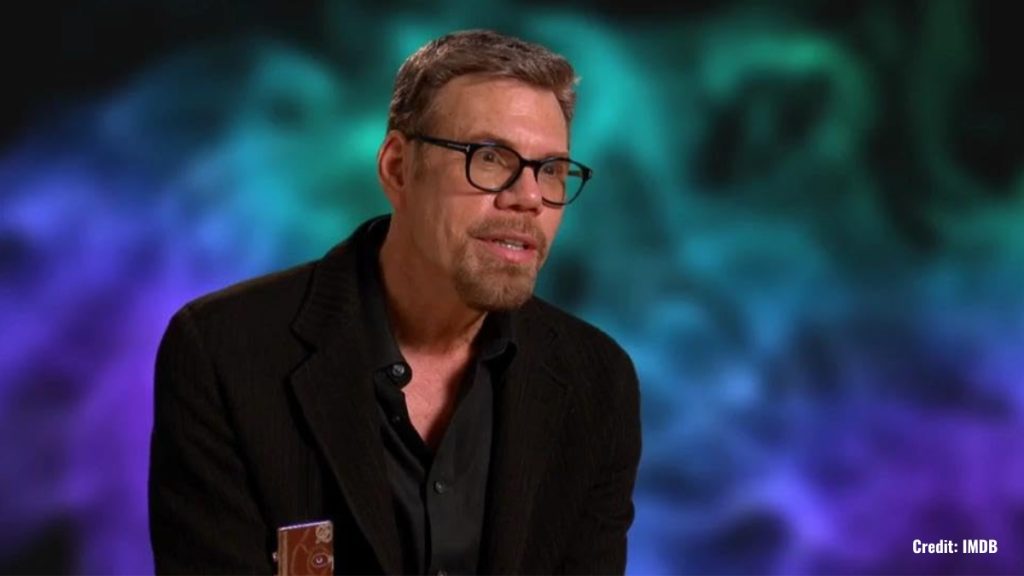
Katzenberg saw the patriotic appeal of the concept but ultimately passed on it, as he was focused on finding full-length feature projects for Disney’s animation department. Kirschner, undeterred, took his pitch elsewhere—to none other than Kathleen Kennedy, Steven Spielberg’s production partner. Kennedy was intrigued and invited Kirschner to Spielberg’s annual Fourth of July party to pitch the idea directly to the famed director.
Spielberg immediately saw the potential in Kirschner’s idea, but instead of a TV special, he envisioned a full-length animated feature film. This project would eventually become An American Tail, a tribute of sorts to Spielberg’s own grandfather, Philip Posner, who emigrated from Russia to the United States in the late 19th century. The film’s lead character, Fievel, was even named after Spielberg’s grandfather, whose Yiddish name was also Fievel.
Disney’s Loss Becomes Universal’s Gain
An American Tail went on to become a major success for Universal Pictures, which hadn’t been involved in an animated feature since the release of Pinocchio in Outer Space in 1965. Meanwhile, over at Disney, Eisner and Wells weren’t exactly thrilled that Katzenberg had let such a promising project slip through his fingers.
Not wanting to miss out on any future opportunities with Kirschner, Katzenberg quickly scheduled another meeting with him to discuss any other ideas he might have. And as fate would have it, Kirschner had just written a short story for Muppet Magazine called Halloween House, about a boy who is magically transformed into a cat by a trio of witches.
The Pitch That Sealed the Deal
Knowing Katzenberg could be a tough sell, Kirschner went all out to impress during his pitch. He requested access to the Disney lot 30 minutes early to set the stage for his presentation. When Katzenberg and the Disney development team walked into the conference room, they were greeted by a table covered in candy corn, a cauldron of dry ice fog, and a broom, mop, and vacuum cleaner suspended from the ceiling as if they were flying—evoking the magical world of Halloween House.
Katzenberg was reportedly unimpressed by the theatrical setup, muttering, “Oy, show-and-tell time” as he took his seat. But Kirschner knew exactly how to grab his attention. He started his pitch with the fact that Halloween was a billion-dollar business—a figure that made Katzenberg sit up and take notice. He listened attentively to Kirschner’s pitch, and by the time the meeting was over, Katzenberg was convinced. Halloween House would become Hocus Pocus, and Disney had its next big Halloween film.
A Bit of Hollywood Drama
Interestingly, Kirschner’s success with Hocus Pocus didn’t sit well with his old collaborators. About a year after the film’s release, Kirschner ran into Kathleen Kennedy at an Amblin holiday party, and she wasted no time in expressing her disappointment. According to Kirschner, Kennedy said, “You really hurt Steven.” When Kirschner asked how, she explained that Spielberg and Kennedy had given him his big break with An American Tail, but when he came up with the idea for his next film, he brought it to Disney rather than to them.
Hollywood can be a place where loyalty is valued—or, at least, perceived loyalty. At the same time, this was happening just as Katzenberg was leaving Disney and partnering with Spielberg and David Geffen to launch DreamWorks SKG, which only added to the tension. Loyalty, as Kirschner found out, can be an abstract concept in the entertainment industry.
A Halloween Favorite is Born
Despite its rocky start at the box office in 1993, Hocus Pocus has gone on to become a beloved part of Halloween pop culture. And, as Carlin’s book details, its success helped pave the way for more Disney Halloween-themed projects in the years that followed.
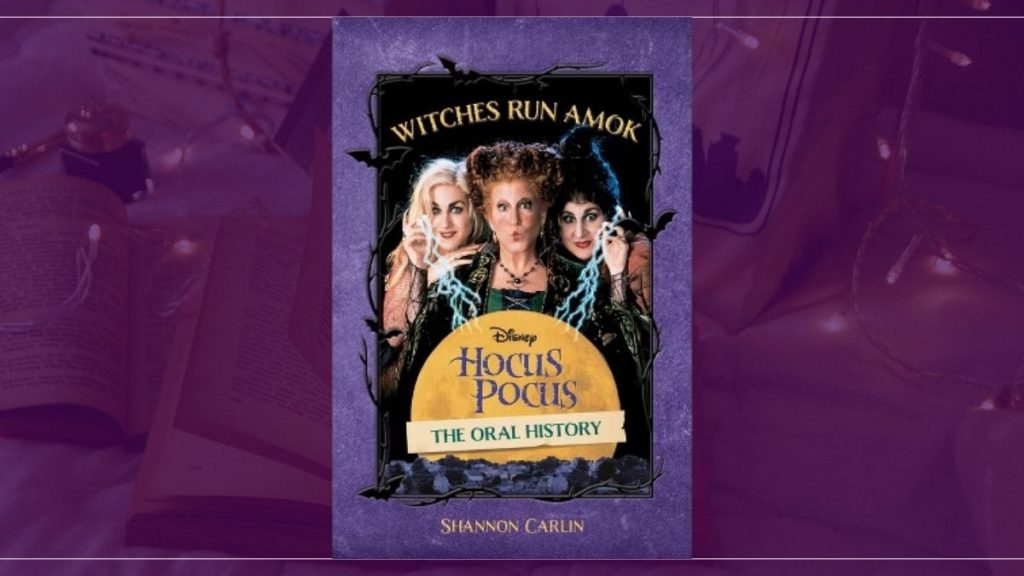
As for why Hocus Pocus was released in July of 1993 instead of during Halloween? That’s a story for another time, but it has something to do with another Halloween-themed project Disney was working on that year—Tim Burton’s The Nightmare Before Christmas—and Katzenberg finding himself in the awkward position of having to choose between keeping Bette Midler or Tim Burton happy.
For more behind-the-scenes stories about Hocus Pocus and other Disney films, be sure to check out Witches Run Amok by Shannon Carlin. It’s a fascinating read for any Disney fan!
And if you love hearing these kinds of behind-the-scenes stories about animation and film history, be sure to check out Fine Tooning with Drew Taylor, where Drew and I dive deep into all things movies, animation, and the creative decisions that shape the films we love. You can find us on your favorite podcast platforms or right here on JimHillMedia.com.
Film & Movies
How Disney’s “Bambi” led to the creation of Smokey Bear

When people talk about Disney’s “Bambi,” the scene that they typically cite as being the one from this 1942 film which then scarred them for life is – of course – the moment in this movie where Bambi’s mother gets shot by hunters.
Which is kind of ironic. Given that – if you watch this animated feature today – you’ll see that a lot of this ruined-my-childhood scene actually happens off-camera. I mean, you hear the rifle shot that takes down Bambi’s Mom. But you don’t actually see that Mama Deer get clipped.
Now for the scariest part of that movie that you actually see on-camera … Hands down, that has to be the forest fire sequence in “Bambi.” As the grown-up Bambi & his bride, Faline, desperately race through those woods, trying to find a path to safety as literally everything around them is ablaze … That sequence is literally nightmare fuel.
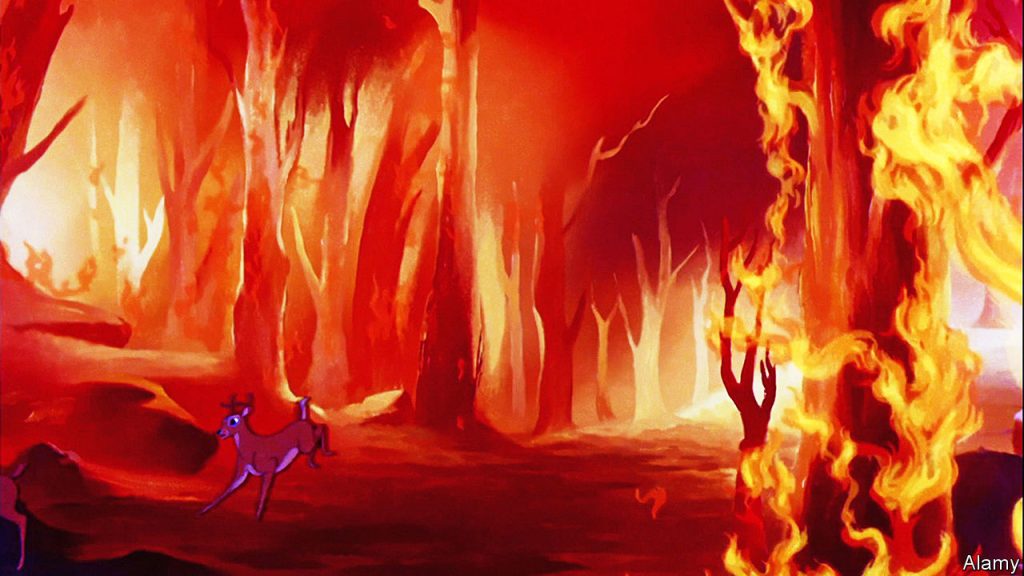
Mind you, the artists at Walt Disney Animation Studios had lots of inspiration for the forest fire sequence in “Bambi.” You see, in a typical year, the United States experiences – due to either natural phenomenon like lightning strikes or human carelessness – 100 forest fires. Whereas in 1940 (i.e., the year that Disney Studios began working in earnest of a movie version of Felix Salten’s best-selling movie), America found itself battling a record 360 forest fires.
Which greatly concerned the U.S. Forest Service. But not for the reason you might think.
Protecting the Forest for World War II
I mean, yes. Sure. Officials over in the Agricultural Department (That’s the arm of the U.S. government that manages the Forest Service) were obviously concerned about the impact that this record number of forest fires in 1940 had had on citizens. Not to mention all of the wildlife habitat that was now lost.
But to be honest, what really concerned government officials was those hundreds of thousands of acres of raw timber that had been consumed by these blazes. You see, by 1940, the world was on the cusp of the next world war. A conflict that the U.S. would inevitably be pulled into. And all that now-lost timber? It could have been used to fuel the U.S. war machine.
So with this in mind (and U.S. government officials now seeing an urgent need to preserve & protect this precious resource) … Which is why – in 1942 (just a few months after the Japanese bombed Pearl Harbor) – the U.S. Forest Service rolls out its first-ever forest fire prevention program.
Which – given that this was the early days of World War II – the slogan that the U.S. Forest Service initially chose for its forest fire prevention program is very in that era’s we’re-all-in-this-together / so-let’s-do-what-we-can-to-help-America’s war-effort esthetic – made a direct appeal to all those folks who were taking part in scrap metal drives: “Forest Defense is National Defense.”

And the poster that the U.S. Forest Service had created to support this campaign? … Well, it was well-meaning as well. It was done in the WPA style and showed men out in the forest, wielding shovels to ditch a ditch. They were trying to construct a fire break, which would then supposedly slow the forest fire that was directly behind them.
But the downside was … That “Forest Defense is National Defense” slogan – along with that poster which the U.S. Forest Service had created to support their new forest fire prevention program didn’t exactly capture America’s attention.
I mean, it was the War Years after all. A lot was going in the country at that time. But long story short: the U.S. Forest Service’s first attempt at launching a successful forest fire prevention program sank without a trace.
So what do you do in a situation like this? You regroup. You try something different.
Disney & Bambi to the Rescue
And within the U.S. government, the thinking now was “Well, what if we got a celebrity to serve as the spokesman for our new forest fire prevention program? Maybe that would then grab the public’s attention.”
The only problem was … Well, again, these are the War Years. And a lot of that era’s A-listers (people like Jimmy Stewart, Clark Gable, even Mel Brooks) had already enlisted. So there weren’t really a lot of big-name celebrities to choose from.
But then some enterprising official at the U.S. Forest Service came up with an interesting idea. He supposedly said “Hey, have you seen that new Disney movie? You know, the one with the deer? That movie has a forest fire in it. Maybe we should go talk with Walt Disney? Maybe he has some ideas about how we can better capture the public’s attention when it comes to our new forest fire prevention program?”
And it turns Walt did have an idea. Which was to use this government initiative as a way to cross-promote Disney Studio’s latest full-length animated feature, “Bambi.” Which been first released to theaters in August of 1942.
So Walt had artists at Disney Studio work up a poster that featured the grown-up versions of Bambi the Deer, Thumper the Rabbit & Flower the Skunk. As this trio stood in some tall grasses, they looked imploring out at whoever was standing in front of this poster. Above them was a piece of text that read “Please Mister, Don’t Be Careless.” And below these three cartoon characters was an additional line that read “Prevent Forest Fires. Greater Danger Than Ever!”
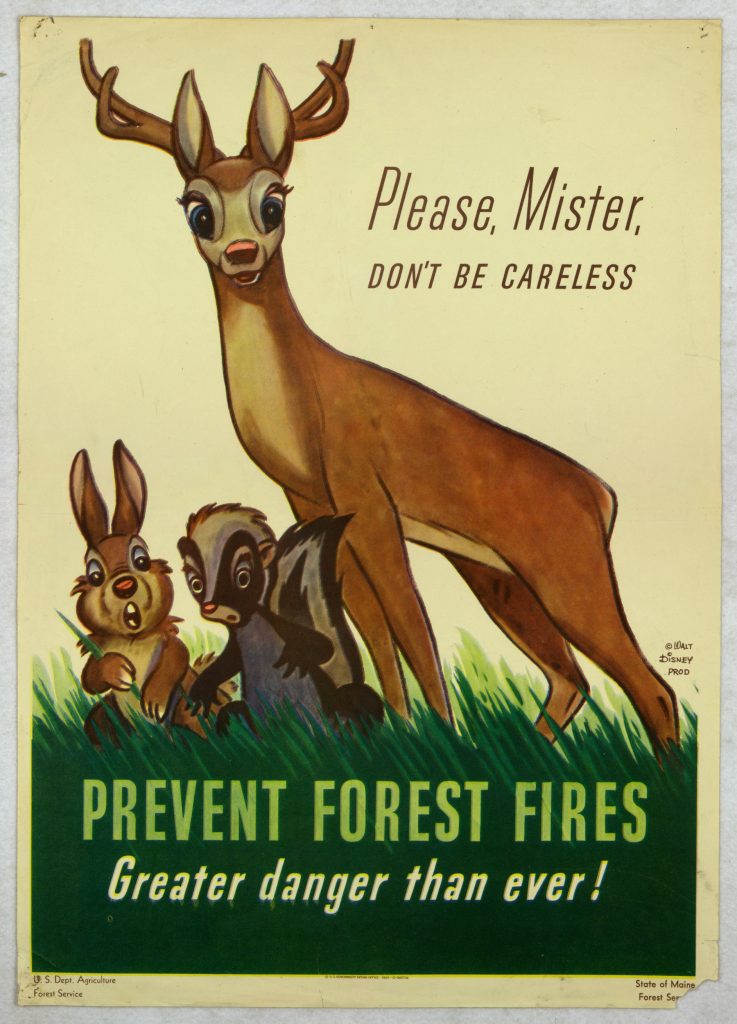
According to folks I’ve spoken with at Disney’s Corporate Archives, this “Bambi” -based promotional campaign for the U.S. Forest Service’s forest fire prevention campaign was a huge success. So much so that – as 1943 drew to a close – this division of the Department of Agriculture reportedly reached out to Walt to see if he’d be willing to let the U.S. Forest Service continue to use these cartoon characters to help raise the public’s awareness of fire safety.
Walt – for reasons known only to Mr. Disney – declined. Some have suggested that — because “Bambi” had actually lost money during its initial theatrical release in North America – that Walt was now looking to put that project behind him. And if there were posters plastered all over the place that then used the “Bambi” characters that then promoted the U.S.’s forest fire prevention efforts … Well, it would then be far harder for Mr. Disney to put this particular animated feature in the rear view mirror.
Introducing Smokey Bear
Long story short: Walt said “No” when it came to reusing the “Bambi” characters to promote the U.S. Forest Service’s forest fire prevention program. But given how successful the previous cartoon-based promotional campaign had been … Well, some enterprising employee at the Department of Agriculture reportedly said “Why don’t we come up with a cartoon character of our own?”
So – for the Summer of 1944 – the U.S. Forest Service (with the help of the Ad Council and the National Association of State Foresters) came up with a character to help promote the prevention of forest fires. And his name is Smokey Bear.
Now a lot of thought had gone into Smokey’s creation. Right from the get-go, it was decided that he would be an American black bear (NOT a brown bear or a grizzly). To make this character seem approachable, Smokey was outfitted with a ranger’s hat. He also wore a pair of blue jeans & carried a bucket.
As for his debut poster, Smokey was depicted as pouring water over a still-smoldering campfire. And below this cartoon character was printed Smokey’s initial catchphrase. Which was “Care will prevent 9 out of 10 forest fires!”
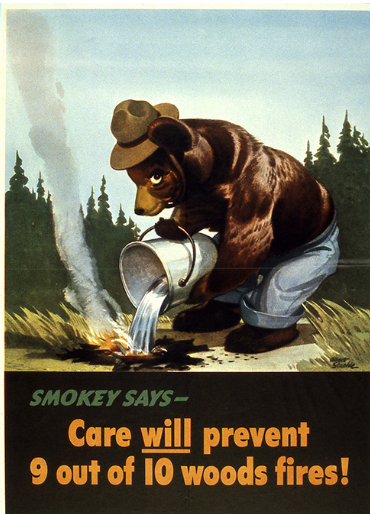
Which makes me think that this slogan was written by the very advertising executive who wrote “Four out of five dentists recommend sugarless gum for their patients who chew gum.”
Anyway … By the Summer of 1947, Smokey got a brand-new slogan. The one that he uses even today. Which is “Only YOU can prevent forest fires.”
The Real Smokey Bear
Now where this gets interesting is – in the Summer of 1950 – there was a terrible forest fire up in the Capitan Mountains of New Mexico. And over the course of this blaze, a bear cub climbed high up into a tree to try & escape those flames.
Firefighters were finally able to rescue that cub. But he was so badly injured in that fire that he was shipped off to the National Zoo in Washington, D.C. and nursed back to health. And since this bear really couldn’t be released back in the wild at this point, he was then put on exhibit.
And what does this bear’s keepers decide to call him? You guessed it: Smokey.
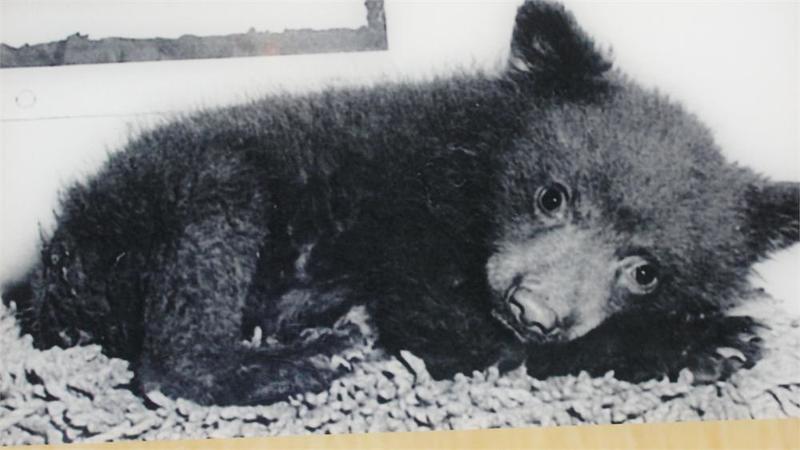
And due to all the news coverage that this orphaned bear got, he eventually became the living symbol of the U.S. Forest Service’s forest fire prevention program. Which then meant that this particular Smokey Bear got hit with a ton of fan mail. So much so that the National Zoo in Washington D.C. wound up with its own Zip Code.
“Smokey the Bear” Hit Song
And on the heels of a really-for-real Smokey Bear taking up residence in our nation’s capital, Steve Nelson & Jack Rollins decide to write a song that shined a spotlight on this fire-fightin’ bruin. Here’s the opening stanza:
With a ranger’s hat and shovel and a pair of dungarees,
You will find him in the forest always sniffin’ at the breeze,
People stop and pay attention when he tells them to beware
Because everybody knows that he’s the fire-preventin’ bear
Believe or not, even with lyrics like these, “Smokey the Bear” briefly topped the Country charts in the Summer of 1950. Thanks to a version of this song that was recorded by Gene Autry, the Singing Cowboy.
By the way, it was this song that started all of the confusion in regards to Smokey Bear’s now. You see, Nelson & Rollins – because they need the lyrics of their song to scan properly – opted to call this fire-fightin’-bruin Smokey THE Bear. Rather than Smokey Bear. Which has been this cartoon character’s official name since the U.S. Forest Service first introduced him back in 1944.
“The Ballad of Smokey the Bear”
Further complicating this issue was “The Ballad of Smokey the Bear,” which was a stop-motion animated special that debuted on NBC in late November of 1966. Produced by Rankin-Bass as a follow-up to their hugely popular “Rudolph the Red-Nosed Reindeer” (which premiered on the Peacock Network in December of 1964) … This hour-long TV show also put a “THE” in the middle of Smokey Bear’s name because the folks at Rankin-Bass thought his name sounded better that way.
And speaking of animation … Disney’s “Bambi” made a brief return to the promotional campaign for the U.S. Forest Service’s forest fire prevention program in the late 1980s. This was because the Company’s home entertainment division had decided to release this full-length animated feature on VHS.
What’s kind of interesting, though, is the language used on the “Bambi” poster is a wee different than the language that’s used on Smokey’s poster. It reads “Protect Our Forest Friends. Only You Can Prevent Wildfires.” NOT “Forest Fires.”
Anyway, that’s how Disney’s “Bambi” led to the creation of Smokey Bear. Thanks for bearin’ with me as I clawed my way through this grizzly tale.
Film & Movies
“Indiana Jones and the Search for Indiana Jones”
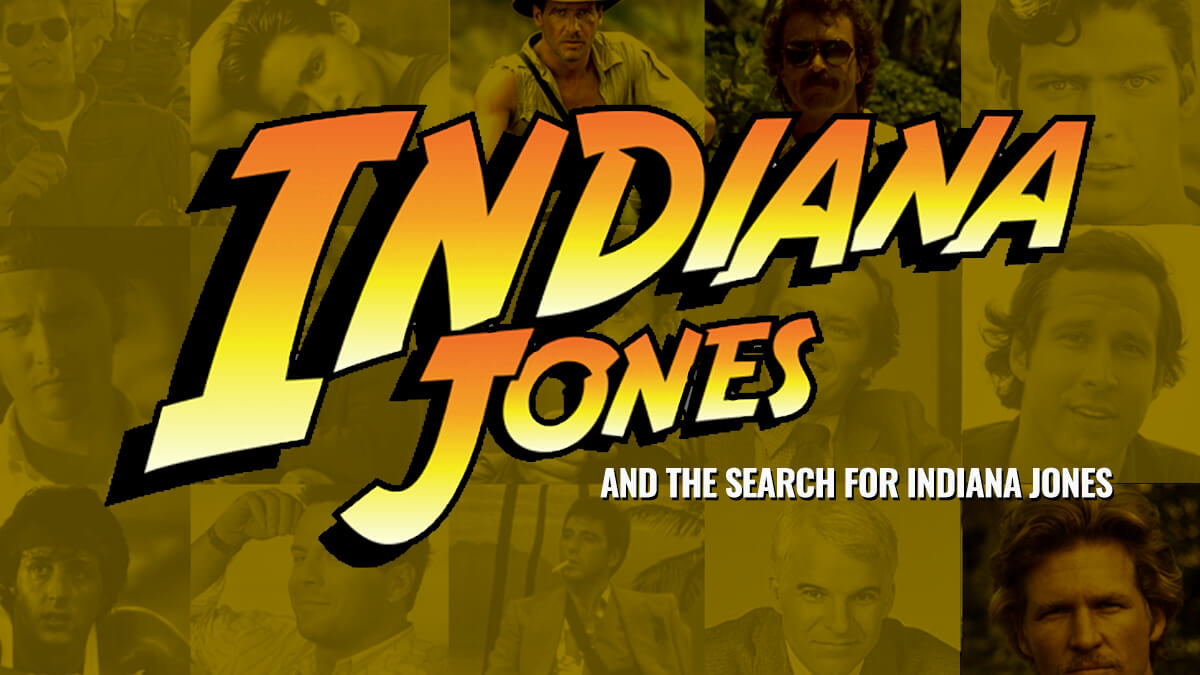
News came late last week that NBC was cancelling the “Magnum PI” remake. This series (which obviously took its inspiration from the Tom Selleck show that originally debuted on CBS back in December of 1980 and then went on run on that network for 8 seasons. With its final episode airing on May 8, 1988).
Anyway … Over 30 years later, CBS decided to remake “Magnum.” This version of the action drama debuted on September 24, 2018 and ran for four seasons before then being cancelled. NBC picked up the “Magnum” remake where it ran for one more season before word came down on June 23rd that this action drama was being cancelled yet again.
FYI: The second half of Season 5 of “Magnum” (10 episodes) has yet to air on NBC. It will be interesting to see when that final set of shows / the series finale gets scheduled.
This all comes to mind this week – out ahead of the theatrical release of “Indiana Jones and the Dial of Destiny” because … Well, if CBS execs had been a bit more flexible back in 1980, the star of the original version of “Magnum PI” (Tom Selleck) would have played the lead in “Raiders of the Lost Ark.” Which was released to theaters back on June 12, 1981.
That’s the part of the Indiana Jones story that the folks at Lucasfilm often opt to skim over.
That Harrison Ford wasn’t George Lucas’ first choice to play Doctor Jones.
Auditions for Indiana Jones – Harrison’s Not on the List
Mind you, Steven Spielberg – right from the get-go – had pushed for Ford to play this part. The way I hear it, Lucas showed Spielberg a work-in-progress cut of “The Empire Strikes Back.” And Steven was so taken with Harrison’s performance as Han Solo in that Irwin Kershner film that he immediately began pushing for Ford to be cast as Doctor Jones.
Whereas Mr. Lucas … I mean, it wasn’t that George had anything against Harrison. What with Ford’s performances first in “American Grafitti” and then in “A New Hope,” these two already had a comfortable working relationship.
But that said, Lucas was genuinely leery of … Well, the sort of creative collaboration that Martin Scorcese and Robert DeNiro. Where one actor & one director repeatedly worked together. To George’s way of thinking, that was a risky path to follow. Hitching your wagon to a single star.
Which is why – when auditions got underway for “Raiders of the Lost Ark” in 1979 — Mike Fenton basically brought in every big performer of that era to read for Dr. Jones except Harrison Ford. We’re talking:
- Steve Martin
- Chevy Chase
- Bill Murray
- Jack Nicholson
- Peter Coyote
- Nick Nolte
- Sam Elliot
- Tim Matheson
- and Harry Hamlin
Casting a Comedian for Indiana Jones
Please note that there are a lot of comedians on this list. That’s because – while “Raiders of the Lost Ark” was in development — Spielberg was directed his epic WWII comedy, “1941.” And for a while there, Steve & George were genuinely uncertain about whether the movie that they were about to make would be a sincere valentine to the movie serials of the 1930s & the 1940s or more of a spoof.
It’s worth noting here that three of the more ridiculous set pieces found in “Temple of Doom” …
- the shoot-out at Club Obi Wan in Shanghai
- Indy, Willie & Short Round surviving that plane crash by throwing an inflatable life raft out of the cargo hatch
- and that film’s mine cart chase (which was not only inspired by Disney theme park favorites the Matterhorn Bobsleds & Big Thunder Mountain Railroad but some of the sound effects that you hear in this portion of “Temple of Doom” were actually recorded after hours at Disneyland inside of these very same attractions)
… all originally supposed to be in “Raiders of the Lost Ark.” I’ve actually got a copy of the very first version of the screenplay that Lawrence Kasdan wrote for the first “Indy” movie where all three of these big action set pieces were supposed to be part of the story that “Raiders” told. And I have to tell you that this early iteration of the “Raiders” screenplay really does read more like a spoof of serials than a sincere, loving salute to this specific style of cinema.
Casting Indiana Jones – Jeff or Tom
Anyway … Back now to the casting of the male lead for “Raiders” … After seeing virtually every actor out in LA while looking for just the right performer to portray Indiana Jones, it all came down to two guys:
- Jeff Bridges
- and Tom Selleck
Jeff Bridges as Indiana Jones
Mike Fenton was heavily pushing for Jeff Bridges. Having already appeared with Clint Eastwood in 1974’s “Thunderbolt & Lightfoot” (Not to mention that “King Kong” remake from 1976), Bridges was a known quantity. But what Fenton liked especially liked about Bridges when it came to “Raiders” was … Well, at that time, Jeff was just coming off “Heaven’s Gate.”
Mind you, nowadays, because we’ve all now had the luxury of seeing the director’s cut of this Michael Cimino movie, we recognize “Heaven’s Gate” for the cinematic masterpiece that it is. But 40+ years ago, that honestly wasn’t the case. All audiences had to judge this movie by was the severely truncated version that United Artists sent out into theaters. Which – because “Heaven’s Gate” had cost $44 million to make and only sold $3.5 million of tickets – then became the textbook example of Hollywood excess.
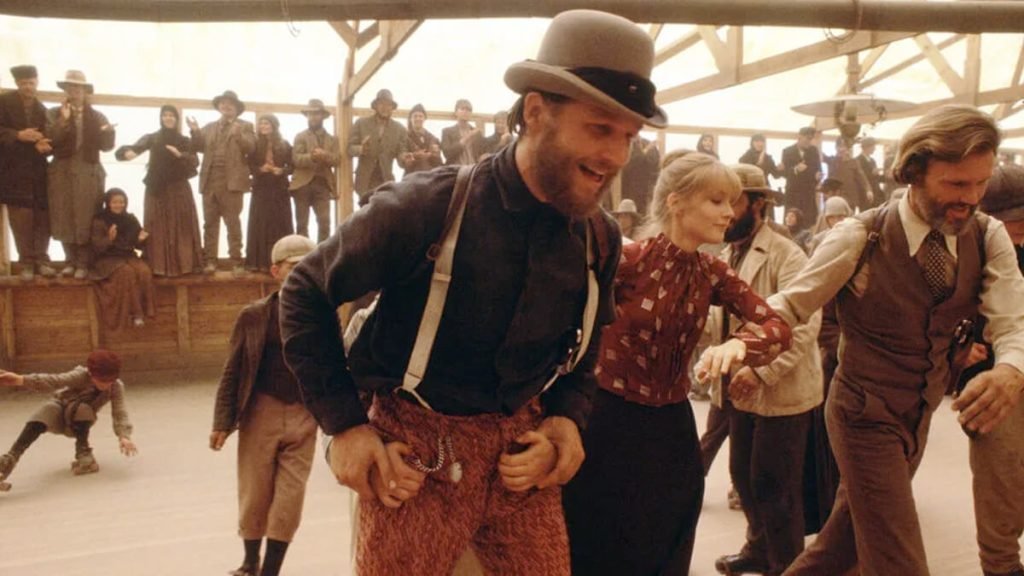
Long story short: Given that being associated with “Heaven’s Gate” had somewhat dinged Bridges’ reputation for being a marketable star (i.e., a performer that people would pay good money to see up on the big screen), Jeff was now looking to appear in something highly commercial. And the idea of playing the lead in a film directed by Steven Spielberg (the “Jaws” & “Close Encounter” guy) and produced by George Lucas (Mr. “Star Wars”) was very, very appealing at that time. Bridges was even willing to sign a contract with Spielberg & Lucas that would have then roped him into not only playing Indiana Jones in “Raider of the Lost Ark” but also to appear as this very same character in two yet-to-be-written sequels.
Better yet, because “Heaven’s Gate” had temporarily dimmed Bridges’ star status, Jeff was also willing to sign on to do the first “Indy” film for well below his usual quote. With the understanding that – should “Raiders of the Lost Ark” succeed at the box office – Bridges would then be paid far more to appear in this film’s two sequels.
That seemed like a very solid plan for “Raiders.” Landing a known movie star to play the lead in this action-adventure at a bargain price.
Ah, but standing in Mike Fenton’s way was Marcia Lucas.
Tom Selleck as Indiana Jones
Marcia Lucas, who had seen Tom Selleck’s audition for “Raiders” (And you can see it as well. Just go to Google and type in “Tom Selleck” and “Indiana Jones.” And if you dig around for a bit, you’ll then see a feature that Lucas & Spielberg shot for “Entertainment Tonight” back in 2008 [This story was done in support of the theatrical release of “Indiana Jones and the Kingdom of the Crystal Skull”]. And as part of this piece, George and Steve share Tom’s original audition for “Raiders.” And what’s genuinely fascinating about this footage is that Selleck’s scene partner is Sean Young. Who – at that time, anyway – was up for the role of Marion Ravenwood) and kept telling her husband, “You should cast this guy. He’s going to be a big star someday.”
And given that George was smart enough to regularly heed Marcia Lucas’ advice (She had made invaluable suggestions when it came to the editing of “American Graffiti” and the original “Star Wars.” Not to downplay George Lucas’ cinematic legacy, but Marcia Lucas was a world-class storyteller in and of her own right), Lucas then reached out to Spielberg and persuaded him that they should cast relative unknown Tom Selleck as Doctor Jones over the already well-known Jeff Bridges.
Now don’t feel too bad for Jeff Bridges. When he lost out on playing the lead in “Raiders of the Lost Ark,” Jeff then accepted a role in the very next, high profile, sure-to-be-commercial project that came along. Which turned out to be Disney’s very first “TRON” movie. Which was eventually released to theaters on July 9, 1982.
Back to Tom Selleck now … You have to remember that – back then – Selleck was the handsome guy who’d already shot pilots for six different shows that then hadn’t gone to series. Which was why Tom was stuck being the guest star on shows like “The Fall Guy” and “Taxi.” Whereas once word got out around town that Selleck was supposed to play the lead in a project that Spielberg was directed & Lucas was producing … Well, this is when CBS decided that they’d now take the most recent pilot that Tom had shot and then go to series with this show.
That program was – of course – the original “Magnum PI.” And it’s at this point where our story started to get complicated.
“Magnum PI” – Two Out of Three Say “Yes”
Okay. During the first season of a TV show, it’s traditionally the network – rather than the production company (which – in this case – was Glen A. Larson Productions. The company behind the original versions of “Battlestar Galactica” & “Knight Rider”) or the studio where this series is actually being shot (which – in this case – was Universal Television) that has all the power. And in this particular case, the network execs who were pulling all the strings behind-the-scenes worked for CBS.
And when it came to the first season of “Magnum PI,” CBS had a deal with Glen A. Larson Productions and Universal Television which stated that the talent which had been contracted to appear in this new action drama would then be available for the production of at least 13 episodes with an option to shoot an additional 9 episodes (This is known in the industry as the back nine. As in: the last nine holes of a golf course).
Anyway, if you take those initial 13 episodes and then tack on the back nine, you then get 22 episodes total. Which – back in the late 1970s / early 1980s, anyway – was what a full season of a network television show typically consisted of.
Anyway … The contract that Selleck had signed with Glen A. Larson Productions, Universal Television & CBS stated that he had to be available when production of Season One of “Magnum PI” began in March of 1980. More to the point, Tom also had to be available should CBS exercise its option to air 22 episodes of this new series on that television network over the course of “Magnum PI” ‘s first season.
Which then made things complicated for George Lucas & Steven Spielberg because … Well, in order for “Raiders of the Lost Ark” to make its June 12, 1981 release date, that then meant that production of the first “Indy” movie would have to get underway no later than June 23, 1980.
But here’s the thing: Production of Season One of “Magnum PI” was scheduled to run through the first week of July of that same year (1980). So in order for Tom Selleck to play Indiana Jones in “Raiders,” he was going to need to be wrapped on production of “Magnum PI” by June 22, 1980 at the absolute latest.
So Spielberg & Lucas went to Glen A. Larsons Productions and asked if Selleck could please be sprung from his “Magnum PI” contractual obligations by June 22nd. And they said “Yes.” Then Steven & George went to Universal Television and asked executives there for their help in clearing Tom’s schedule so that he’d then be available to start work on “Raiders.” And they say “Yes” as well.
Spielberg & Lucas now go to CBS. But instead of the quick “Yeses” that they got from officials at Glen A. Larson Productions and Universal Television, it takes those suits at the Tiffany Network weeks before they then decided to say “No, they couldn’t release Tom Selleck early to go work on ‘Raiders’ “ because …
I’ve never really been able to get a straight answer here as to why CBS execs dug in their heels here. Why they flat-out refused to release Selleck early from his “Magnum PI” contractual obligation and allow him to go shoot “Raiders.”
Payback from “The Star Wars Holiday Special” Trash Talk
That said, it is worth noting that “The Star Wars Holiday Special” aired on CBS back in November of 1978. And given that – in the years that followed — Lucas wasn’t exactly shy when it came to saying how much he hated that two hour-long presentation (Or – for that matter – how George really regretted caving into the requests of CBS execs. Who had insisted that television stars long associated with the Tiffany Network – people like Art Carney, Harvey Korman & Bea Arthur – be given prominent guest starring roles in “The Star Wars Holiday Special”). And I’ve heard whispers over the years that CBS executives preventing Tom Selleck from appearing in “Raiders” could be interpreted as the Tiffany Network getting some payback for what George had said publicly about the “Star Wars Holiday Special.”
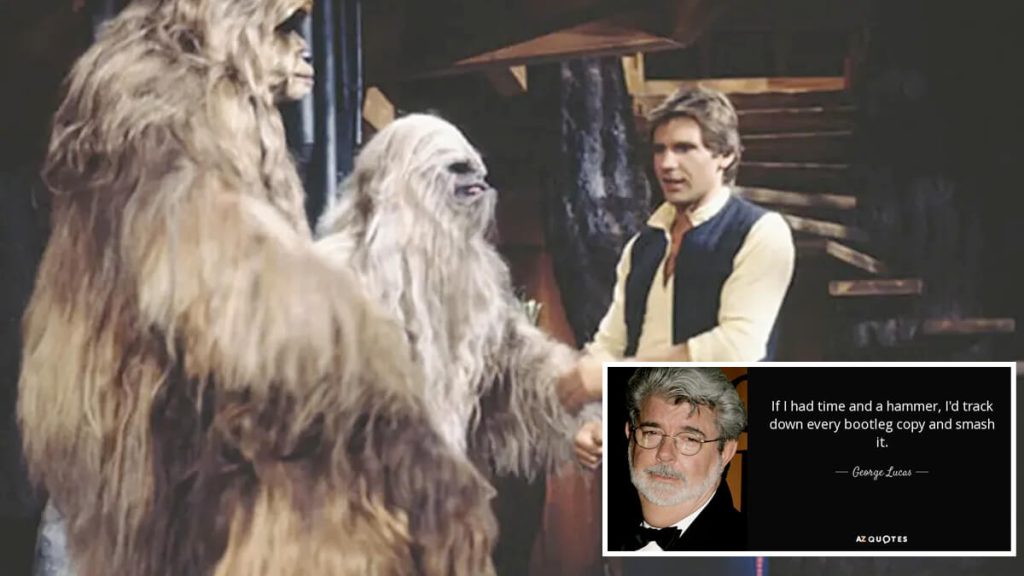
Harrison Ford Comes to Rescue “Indiana Jones”
Anyway … It’s now literally just weeks before production of “Raiders of the Lost Ark” is supposed to begin and Spielberg & Lucas have just learned that that they’ve lost their film’s star. CBS is flat-out refusing to release Tom Selleck early from his “Magnum PI” contractual obligation. So Steven & George now have to find someone else to play Indy … and fast.
The real irony here is … The American Federation of Television and Radio Artists would go on strike in the Summer of 1980. Which then shut prematurely shut down production of the first season of “Magnum PI.” (As a direct result, the first full season of this action drama to air on CBS only had 18 episodes, rather than the usual 22). And because this job action lasted ‘til October 23rd of that same year … Well, this meant that Tom Selleck would have actually been free to start shooting “Raiders of the Lost Ark” on June 23, 1980 because production of Season One of “Magnum PI” was already shut down by then due to that AFTRA strike.
But no one knew – in May of 1980, anyway – that this job action was going to happen in just a few weeks. All that Steven Spielberg & George Lucas knew was that they now needed a new lead actor for “Raiders.” And circling back on Jeff Bridges was no longer an option. As I mentioned earlier, Jeff had agreed to do “TRON” for Disney. And – in the interim – Bridges gone off to shoot “Cutter’s Way” for MGM / UA.
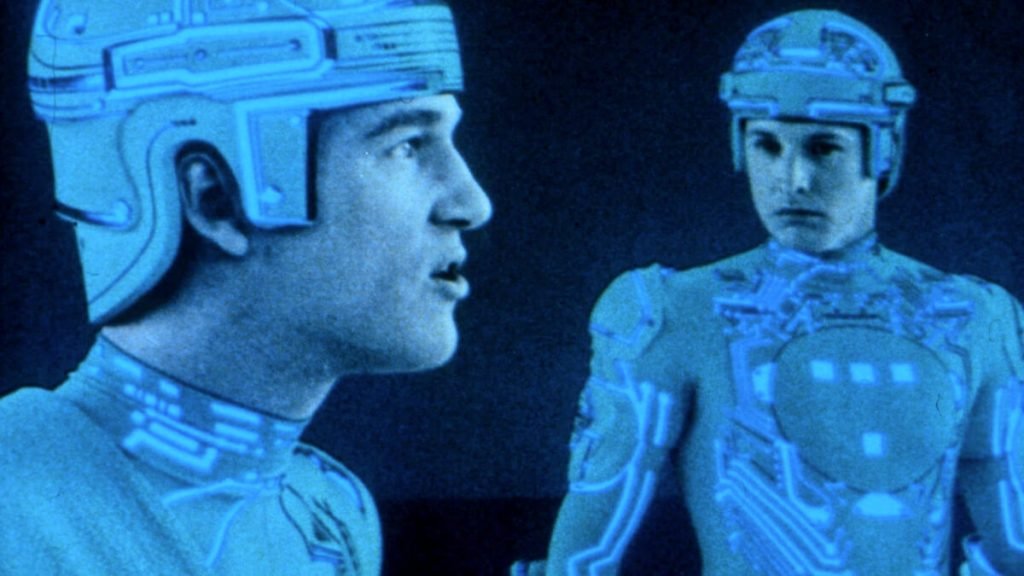
So this is where Harrison Ford enters the equation. As he recalls:
In May of 1980, I get a call from George Lucas. Who says ‘I’m messaging a script over to you this morning. As soon as it gets there, I need you to immediately read this script. Then – as soon as you’re done – I need you to call.
So the script arrives and it’s for ‘Raiders.’ I read it and it’s good. So I call George back and say ‘It’s good.’ And he then says ‘Would you be interested in playing Indy?’ I say that it looks like it would be a fun part to play.
George then says ‘ That’s great to hear. Because we start shooting in four weeks. Now I need you to meet with Steven Spielberg today and convince him that you’re the right guy to play Indy.’
Of course, given that Spielberg had been pushing for Ford to pay Indy ever since he had first seen that work-in-progress version of “The Empire Strikes Back” … Well, Harrison’s meeting with Steven was very, very short. And just a few weeks later, Spielberg, Lucas & Ford were all at the Port de la Pallice in La Rochelle. Where – on the very first day of shooting on “Raiders” (which – again – was June 23, 1980)– the scene that was shot was the one where that Nazi sub (the one that Indy had lashed himself to its periscope by using his bullwhip as a rope) was arriving at its secret base.
And all of this happened because Harrison immediately agreed to do “Raiders of the Lost Ark” when the part of Indy was first offered to him in mid-May of 1980.
Before “Star Wars” was “Star Wars”
So why such a quick yes? Well, you have to remember that “Empire Strikes Back” wouldn’t be released to theaters ‘til May 21, 1980. And no one knew at that time whether this sequel to the original “Star Wars” would do as well at the box office as “A New Hope” had back in 1977 (FYI: “Empire” would eventually sell over $500 million worth of tickets worldwide. Which is roughly two thirds of what the original “Star Wars” earned three years earlier).
More to the point, the four films that Harrison had shot right after “A New Hope” / prior to “Empire Strikes Back” (i.e., “Heroes” AND “Force 10 from Navarone” AND “Hanover Street” AND “The Frisco Kid”) had all under-performed at the box office. So to Ford’s way of thinking, taking on a role that Tom Selleck was no longer available to play – one that had the potential of spawning two sequels – seemed like a very smart thing to do. Especially after three years of cinematic stumbles.
By the way, whenever this topic ever comes up, Harrison Ford is very gracious. He always makes a point of saying that he’s grateful to have gotten this career opportunity. More to the point, that he still feels kind of bad that Tom Selleck never got the chance to play this part.
Tom Selleck After “Indiana Jones”
That said, we shouldn’t feel too bad for Tom Selleck. After all, the original “Magnum PI” proved to be a long running hit for CBS. And in an effort to smooth over any residual bad feelings that may have resulted from Tom being forced to give up “Raiders” back in May of 1980, Selleck was eventually allowed to create his own production company (i.e., T.W.S. Productions, Inc. As in Thomas William Selleck Productions). Which – after the fact – was then cut in on some of those “Magnum PI” -related revenue streams.
More to the point, while “Magnum PI” was on hiatus following its second year in production, Selleck flew off to Yugoslavia. Where he then shot his own Indiana Jones-esque film for theatrical release. Which was called “High Road to China” in the States, but – overseas – was promoted as “Raiders of the End of the World.”
FYI: Warner Bros. released “High Road to China” stateside 40 years ago this year. On March 18, 1983, to be exact. It didn’t do all that great at the box office. $28 million in ticket sales versus $15 million in production costs.
And over the years, there’s even been some talk of finding a way to maybe set things right here. By that I mean: Finally finding a way to officially fold Tom Selleck into the world of Indiana Jones.
Could Tom Selleck Work with Indiana Jones?
The way I hear it, between the time when “Indiana Jones and the Last Crusade” was theatrically released in May of 1989 and when “Indiana Jones and the Kingdom of the Crystal Skull” debuted in May of 2008, there were a number of ideas for Indiana Jones sequels tossed around. And from what I’ve been told, there was at least one treatment for a fourth Indiana Jones film written that proposed pairing up Harrison Ford & Tom Selleck. With the idea here being that Selleck was supposed to have played Ford’s brother.
Obviously that film was never made. And – no – I don’t know what state Indiana Jones’ brother was supposed to be named after.
This article is based on research for Looking at Lucasfilm “Episode 80”, published on June 29, 2023. Looking at Lucasfilm is part of the Jim Hill Media Podcast Network.
-

 History10 months ago
History10 months agoThe Evolution and History of Mickey’s ToonTown
-

 History11 months ago
History11 months agoUnpacking the History of the Pixar Place Hotel
-

 History11 months ago
History11 months agoFrom Birthday Wishes to Toontown Dreams: How Toontown Came to Be
-

 Film & Movies8 months ago
Film & Movies8 months agoHow Disney’s “Bambi” led to the creation of Smokey Bear
-

 News & Press Releases10 months ago
News & Press Releases10 months agoNew Updates and Exclusive Content from Jim Hill Media: Disney, Universal, and More
-

 Merchandise8 months ago
Merchandise8 months agoIntroducing “I Want That Too” – The Ultimate Disney Merchandise Podcast
-

 Theme Parks & Themed Entertainment3 months ago
Theme Parks & Themed Entertainment3 months agoDisney’s Forgotten Halloween Event: The Original Little Monsters on Main Street
-

 Film & Movies3 months ago
Film & Movies3 months agoHow “An American Tail” Led to Disney’s “Hocus Pocus”

